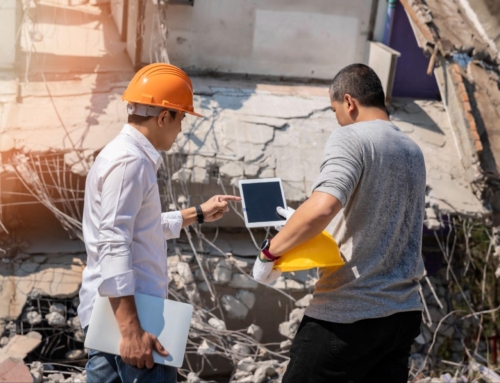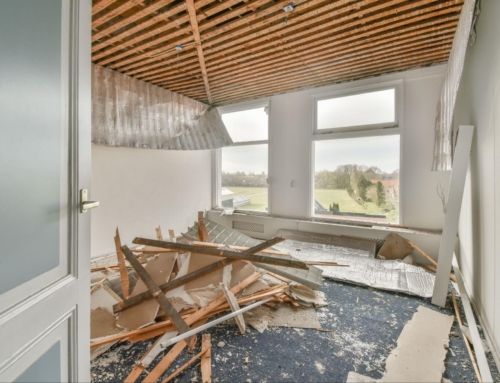
Steps to Take Immediately After Experiencing Smoke Damage
Smoke damage after a fire can leave you overwhelmed and unsure of where to start. The lingering smell, discolored walls, and potential health risks make it clear that time is of the essence. Immediate action can prevent further damage and help restore your home to its pre-fire condition. However, knowing exactly what steps to take immediately after experiencing smoke damage can make all the difference. Here, we provide a clear and comprehensive guide to help you navigate this challenging situation.
Assessing the Extent of Smoke Damage
Before starting the cleanup process, you must understand the scope of the smoke damage. Smoke damage isn’t just about what you can see; it also involves hidden dangers that can affect your home’s structure and air quality. The severity of the damage can vary based on the fire’s intensity, how long it burned, and the type of materials involved.
Look for obvious signs like soot-covered surfaces, yellowing walls, and a persistent smoky odor. These are indicators that smoke particles have deeply penetrated your home’s surfaces. In more severe cases, you might notice warping or discoloration of walls and ceilings, which could suggest structural damage. If the damage seems extensive, it’s wise to call a professional to assess the situation. They can identify issues you might overlook and accurately estimate the damage.
Ensuring Safety Before Reentering the Property
Safety should be your top priority before reentering your smoke-damaged home. The air quality inside might be compromised, and structural hazards might not be immediately visible. Smoke particles can linger in the air, leading to respiratory issues, especially for those with pre-existing conditions like asthma.
Before entering, look for signs of structural damage, such as sagging ceilings or floors, which could indicate a risk of collapse. If you need more clarification about the environment’s safety, it’s best to consult with local authorities or a professional restoration company. They can test the air quality and ensure the property is safe to enter. Remember, health and safety take priority over salvaging your belongings.
Ventilating the Space to Remove Smoke Odors
Once it’s safe to enter your home, the first step is to improve the air quality by ventilating the space. Smoke odors can be stubborn and pervasive. Thus, you must open all windows and doors to allow fresh air to circulate throughout the property. That helps disperse the smoky smell and reduces the concentration of harmful particles in the air.
Using fans to direct the flow of air outside can accelerate the process. Additionally, air purifiers with HEPA filters can effectively capture lingering smoke particles. Dehumidifiers can also help by reducing moisture, which can otherwise trap smoke odors in your home. However, if the smell persists after these efforts, calling in professionals specializing in odor removal might be necessary.
Cleaning and Removing Soot From Surfaces
Soot can settle on every surface after a fire, leaving a grimy, sticky residue that is difficult to clean. Proper cleaning is vital to prevent further damage to your belongings and property. Different surfaces require different cleaning methods, so it’s essential to approach this task with care.
Start with dry cleaning sponges designed to absorb soot from walls and ceilings without smearing it. A mixture of water and mild detergent can be used for more stubborn areas, but avoid saturating the surfaces, as excessive moisture can cause more harm than good. Vacuuming with a high-efficiency filter can remove loose soot particles before deeper cleaning for upholstery, carpets, and other soft furnishings. If the soot is deeply embedded into surfaces or items, consider hiring a professional cleaning service to ensure a thorough job.

Addressing Water Damage From Firefighting Efforts
Water damage from firefighting efforts can compound the challenges of dealing with smoke damage. The water to extinguish the fire can soak into floors, walls, and furniture, leading to mold growth and structural issues if not adequately addressed. Acting quickly is crucial to prevent further damage.
Start by removing any standing water using pumps or wet vacuums. Next, fans, dehumidifiers, and heaters should be used to dry out the affected areas as much as possible. Look for places where water might have pooled, such as basements or under floors. Once the property is dry, check for any signs of mold or mildew. If you find mold, treat it immediately with appropriate cleaning solutions or seek professional help, as mold can pose serious health risks.
Handling Smoke-Damaged Textiles and Personal Items
The emotional impact of losing personal belongings to smoke damage can be overwhelming. However, many items, especially textiles, can be salvaged with the right approach. Sort your items to identify the most valuable or sentimental ones.
Washing clothing, linens, and other textiles as soon as possible can help remove the smoke odor. Use a strong detergent and add a cup of vinegar to neutralize the smell. Delicate fabrics or items with significant damage might require professional cleaning. It might be best to discard items with severe damage, such as those that have melted or heavily stained with soot. Letting go of items that cannot be restored prevents lingering odors or health risks in your home.
Documenting the Damage for Insurance Claims
Thorough documentation is crucial when dealing with smoke damage, as it helps ensure that your homeowners insurance claim is processed smoothly. Photograph every room, focusing on areas with visible damage. Take close-up shots of items affected by smoke, soot, or water damage.
Keep a detailed inventory of all damaged items, noting their condition and approximate value. This list will be invaluable when working with insurance adjusters. Retain all receipts for any expenses incurred during the cleanup and restoration process, as these can be claimed. When meeting with your insurance adjuster, present your documentation clearly and be prepared to discuss the full extent of the damage. A well-documented claim will likely be approved, leading to faster repairs and restoration.
Seeking Professional Help for Restoration
While you can handle some smoke damage on your own, there are situations where professional help is essential. Restoration professionals have the expertise and equipment to deal with extensive damage efficiently and thoroughly. They can address issues that may not be visible to the untrained eye, ensuring your home is safe and fully restored.
When looking for a restoration company, thoroughly research to find reputable providers with positive reviews. A good restoration company will assess the damage, provide a clear action plan, and work with your insurance company to ensure the process goes smoothly. Hiring professionals can save you time and stress, often leading to a more effective and lasting restoration.

Understanding the Different Types of Smoke Damage
Smoke damage isn’t one-size-fits-all; it varies depending on the type of fire that caused it. Fires can originate from various sources, such as burning protein, synthetic materials, or natural elements like wood. Each type of fire produces different smoke, which impacts the cleaning and restoration process.
For instance, protein fires often resulting from kitchen mishaps leave a strong, pungent odor and minimal visible residue. In contrast, synthetic fires, caused by burning plastics and other artificial materials, produce thick black smoke that leaves behind oily, smeary residue, making cleaning more challenging. Natural fires, such as those involving wood or paper, create dry, powdery soot that can spread quickly but is generally easier to clean. Understanding the type of smoke damage your property has sustained is crucial for selecting the appropriate cleaning methods and ensuring effective restoration.
The Role of Insurance in Covering Smoke Damage
Dealing with smoke damage is stressful enough without worrying about how to pay for the necessary repairs. It is where your homeowner’s insurance comes into play. Understanding what your insurance policy covers can make the difference between a smooth recovery and a financial burden.
Typically, homeowner’s insurance policies cover smoke damage as part of fire damage, including the cost of cleaning, repairs, and restoring personal property. However, the extent of coverage can vary depending on your policy. Some policies may cover additional living expenses if you must stay elsewhere during repairs. Reviewing your policy details and contacting your insurance provider to understand your coverage entirely is crucial. If your claim is denied or only partially covered, consider negotiating with your insurer or seeking legal advice to ensure you receive fair compensation for your losses.
Getting Accurate Estimates Before Restoration
Obtaining accurate estimates is a critical step that must be considered before diving into restoration. Accurate estimates give you a clear picture of the costs involved, helping you plan and budget accordingly. Without these, you may face unexpected expenses that derail your recovery process.
Contact multiple restoration professionals to get detailed quotes for the work required. These estimates should cover all aspects of the restoration, from cleaning and odor removal to structural repairs and replacements. Ensure the estimates are itemized, allowing you to see the breakdown of costs and compare them effectively. Accurate estimates are also crucial in your insurance claim, providing documented proof of the necessary expenses. It helps ensure you receive adequate compensation from your insurance company and can proceed with the restoration without financial stress.
Using Estimating Software for Precise Cost Assessments
In addition to traditional methods of obtaining estimates, many restoration companies now utilize advanced estimating software to provide more precise and comprehensive cost assessments. These tools consider a wide range of variables, such as local labor rates, material costs, and the extent of damage, to generate highly accurate estimates. This technology streamlines the estimating process, ensuring that every detail is considered and no crucial expense is overlooked.
Using estimating software offers several advantages. It speeds up obtaining estimates and provides a standardized approach that can be easily compared across different service providers. This consistency is particularly beneficial when working with insurance companies, as it ensures that the estimates align with industry standards, reducing the likelihood of disputes. By choosing restoration companies that leverage this technology, you gain greater confidence and control over the restoration process, knowing that the cost assessments are accurate and reliable.
Dive deeper into restoration advice by checking out our Estimate Solutions blog.





